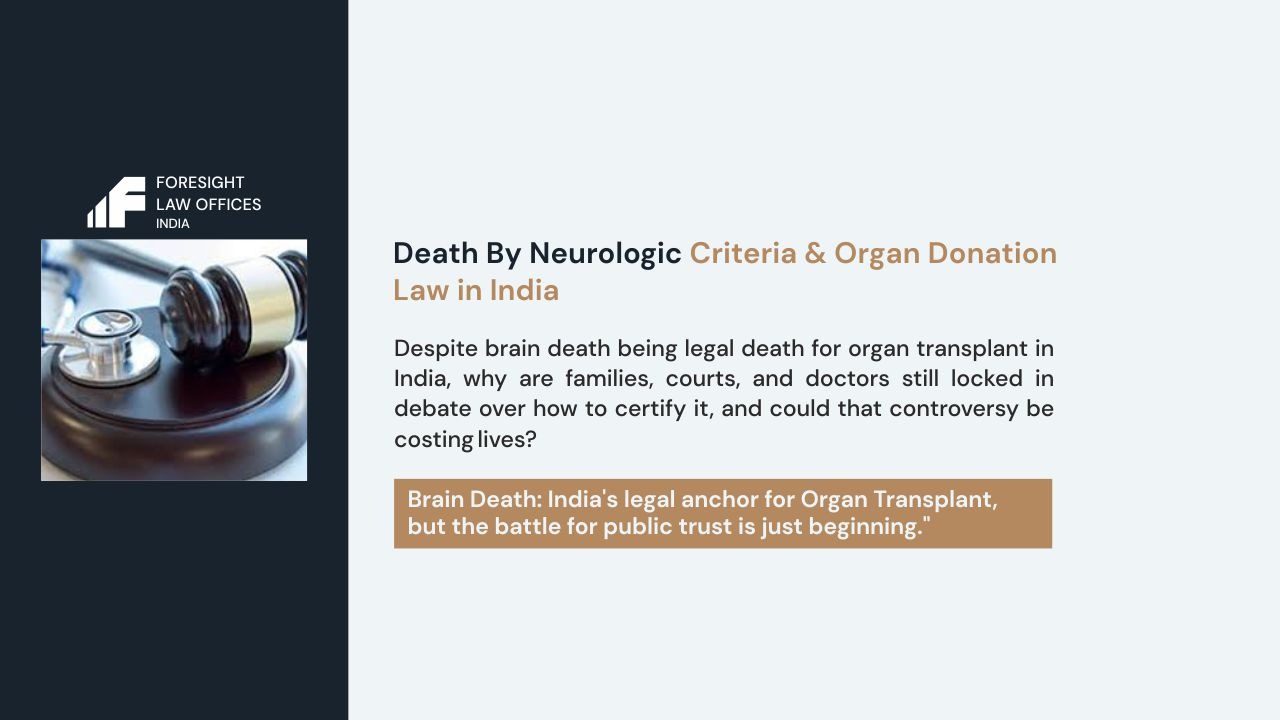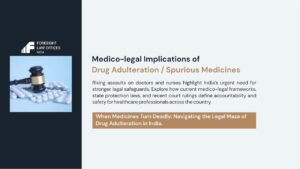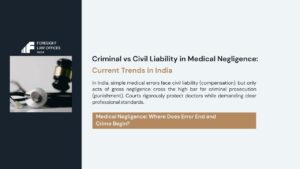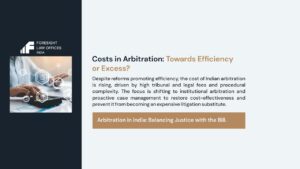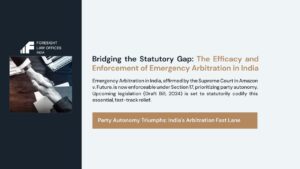India recognizes brain-stem death as legal death, enabling life-saving organ donation from ventilated donors. Yet controversy persists: families, clinicians, ethicists, and courts continue to debate how brain death is determined, documented, communicated, and reviewed. The stakes are profound; public trust in organ donation hinges on getting this right. This blog discusses about organ donation law in India.
The legal framework
The foundation is the Transplantation of Human Organs and Tissues Act (THOTA) 1994 and its amendments/rules (notably 2011 and 2014). Under THOTA, brain-stem death equals legal death, and hospitals must follow a prescribed certification process using a multi-member board and standardized forms (commonly referred to as Form 10 under the 2014 Rules). National bodies such as NOTTO have issued detailed operational manuals and implementation guidelines for hospitals and state networks.
The legal anchor: THOTA and why it matters
India legally recognizes brain-stem death as death under the Transplantation of Human Organs and Tissues Act, 1994 (THOTA) and its Rules (notably the 2014 amendments). Practically, that means a person can be certified dead-on brain-stem criteria, not only after circulatory arrest. THOTA also prescribes who examines the patient and the format/timing of the two examinations to certify brain-stem death.
In India, Brain Death – Death by Neuologic Criteria is still most commonly performed in the context of potential deceased organ donation, typically in centers familiar with transplant coordination. This narrow usage, and lingering confusion about criteria and forms, explains much of today’s medico-legal friction. Moreover, lack of knowledge regarding the appropriate process often lead to unwanted complications, even at a explains much of today’s medico-legal friction. Moreover, lack of knowledge regarding the appropriate process often lead to unwanted complications, even at a sensitive situation.
The medical test: how Brain Death – Death by Neurologic Criteria is determined
Indian protocols, aligned with major international consensus statements, rely on:
- Establishing the cause of catastrophic brain injury and ruling out confounders (hypothermia, drugs, metabolic derangements).
- Demonstrating coma, absence of brain-stem reflexes (pupillary, corneal, oculocephalic/oculovestibular, gag/cough), and a formal apnea test for absent drive to breathe.
- Ancillary tests (e.g., cerebral blood-flow studies, EEG) are reserved for atypical situations; e.g., when the apnea test cannot be safely completed. Recent reviews emphasize both underuse and overreliance of ancillary tests, and warn against “premature” or “delayed” diagnosis.
Practice pointer for hospitals and medico-legal lawyers: Ensure your ICU policy mirrors the national protocol, names the constitution of the brain-stem death certification board, captures timing of the two exams, and documents pre-test prerequisites. Most disputes trace back to documentation gaps, incomplete confounder clearance, or ambiguous apnea testing records.
Organ donation framework and the role of NOTTO
Once Brain Death is certified, the donation pathway is governed by the national program administered through NOTTO/ROTTO/SOTTO, with allocation policies, registration requirements and center approvals. Official guidance continues to promote deceased donation (Brain Death and circulatory death) to reduce dependence on living donors and to curb commercial risk. Annual reports and guidelines show ongoing training drives and standardization pushes.
Reality check (2024–25): Deceased donation remains concentrated in a few states and major public institutions, which have even won awards for best brain-stem death committees; evidence that robust processes can thrive with governance focus.
The controversies: regulation, religion, resources, and Kerala’s chilling effect
2025 PubMed-indexed review maps India’s Brain death – death by neurologic criteria controversies across three recurrent themes: regulation, religion, and resource allocation, and analyzes how high-profile disputes in Kerala dented public trust and correlatively reduced donations there, even as western/southern states progressed. The paper urges clearer regulation and better public communication.
Why cases snowball:
- Regulatory opacity (which form, which intervals, who signs?) fuels litigation threats.
- Religious/ethical anxieties arise when families equate a beating heart on the ventilator with life, even after brain death – dreath by neurologic criteria.
- Resource constraints (overstretched ICUs, uneven training, delayed confirmatory steps) create room for error, or the perception of it.
These are not uniquely Indian problems; worldwide literature flags similar fault lines, but local trust dynamics and communication gaps sharpen them here.
What Courts are saying
This year, the Supreme Court of India entertained petitions questioning the scientific basis of “brain death” or alleging premature declarations for organ harvesting. Notably, on September 2025, the Court showed reluctance to rewrite medical standards from the Bench, indicated that issues may lie in the legislative/medical domain, and even struggled (quite candidly) with the clinical jargon, leading to adjournments and a signal that Parliament and expert bodies must clarify the framework. For hospitals and medico-legal counsel, the message is: follow the statute and authoritative guidelines scrupulously, because the Court is not rushing to reinvent the criteria.
Strategy for hospitals and counsel (the “no-surprises” playbook)
For hospitals/ICUs
| Strategy | How They Can Be Useful |
| Policy harmonization | Align SOPs to THOTA/Rules and NOTTO guidance; cross-reference the World Brain Death Project and AAN guidance for clinical content (where consistent with Indian law). |
| Rostered certification board | Publish names/roles; train alternates; audit every BRAIN DEATH – DEATH BY NEUROLOGIC CRITERIA instance within 72 hours. |
| Hard-stop checklists | Pre-conditions; exam elements; apnea protocol; safety abort criteria; ancillary-test triggers. |
| Communication pathway | Two separate, documented conversations: (i) death declaration; (ii) donation options (if any). Provide written FAQs in local language. |
For medico-legal lawyers/law firms handling medical matters
| Strategy | How They Can be Useful |
| Early involvement | Review the file before the declaration meeting if a dispute is brewing; coach teams on neutral, compassionate phrasing that tracks the chart. |
| Compliance audit trail | Ensure timestamps, signatures, lab values, and the form numbers match the statute/rules; preserve all ventilator and ABG data. |
| Litigation posture | Courts are signaling deference to medical standards while scrutinizing process. Your defense should foreground protocol fidelity and transparent family engagement; your plaintiff work should target deviations and communication lapses. |
| Policy advocacy | Where ambiguity exists (e.g., precise ancillary-test triggers, uniform forms across states), support hospital associations in submitting draft clarifications to MoHFW/NOTTO. |
Ethical guardrails: dignity, autonomy, and justice
Brain death – Brain Death by Neurologic Criteria cases sit at a sensitive moral crossroads. Ethical best practice in India requires:
- Respect for dignity: Treat the BRAIN DEATH – DEATH BY NEUROLOGIC CRITERIA patient as deceased for clinical decisions, but recognize the family’s shock when ventilators continue.
- Autonomy & informed authorization: Donation discussions must be uncoerced, staged, and culturally sensitive.
- Justice: Equitable allocation via NOTTO; avoid any hint of organ “shopping.”
What’s next?
Internationally, there’s a push to standardize Death by Neurologic Criteria definitions and tighten misdiagnosis prevention. India, too, is in a moment of reflection, Supreme Court petitions, public debate, and scholarly calls for clearer regulation. Rather than litigate the biology of brain death, the smarter path is process perfection: uniform forms, nationwide training, bedside checklists, and radical transparency with families. That is how medico-legal risk truly falls and public trust rises.

